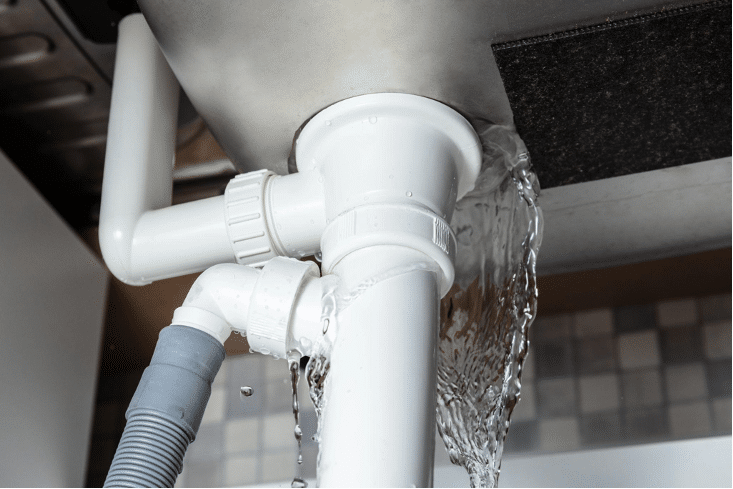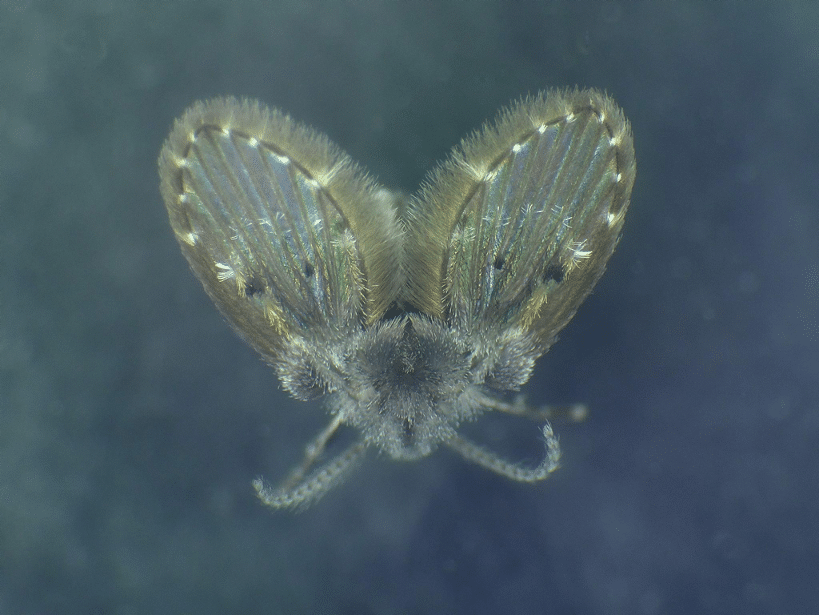Drain flies, more formally known as psychodidae, but also referred to as moth flies, filter flies, or sewer flies, are tiny insects that can be a significant annoyance within homes. Although they are relatively harmless from a health perspective, their presence can signal underlying faults in plumbing or other domestic systems that, if left untreated, can lead to more severe problems such as increased costs and potential water damage.
A major cause of drain fly infestations is water leakage. Even seemingly insignificant leakages provide an ideal habitat for them to not only survive but thrive, leading to larger infestations. Throughout this comprehensive article, we’ll dive deeper into the characteristics of drain flies, discuss how and why leaks create the ideal conditions for them, and explore several practical strategies to prevent and manage related infestations.
Understanding Drain Flies
Drain flies, characterised by their distinctive moth-like bodies marked with fuzzy wings, are small insects that grow to a length of around 2-5 mm. They are mostly nocturnal and prefer environments that boast both high humidity and an abundance of organic debris. These insects are often found around drains and sinks within homes, but also inhabit any area that provides them with a constant moisture source, such as areas with standing water.
In a typical household, you’re most likely to spot drain flies around bathroom and kitchen sinks, showers, and other wet areas. Drain flies have a proclivity for the wet organic ‘sludge’ that tends to build up within household plumbing systems. This build-up serves as both their feeding and breeding ground, enabling them to complete a full life cycle – from eggs to larvae to adults – within eight to twenty-four days.
Recognising a drain infestation as early as possible – by spotting adult flies around drains, finding small, fuzzy larvae in the slimy build-up within pipes, or detecting abnormal, musty odours – is fundamental. It’s the first step in containing the problem and taking action, to prevent these tiny insects from becoming widespread and dominating your living space.
How Leaks Create Ideal Conditions for Drain Flies
In many homes, leaks are a common problem that can contribute significantly to creating hospitable environments for drain flies. These leaks, whether obvious or covert, might seem minor on the surface, but they are a catalyst that can pave the way for these tiny insects to settle and multiply.
Leak-induced moisture buildup is particularly problematic. Leaks from dripping facets, malfunctioning pipes, or faulty seals can lead to accumulated water and excessive moisture. This moisture promotes bacterial growth and the proliferation of organic matter – the primary food source for drain flies.
Stagnant water, another byproduct of leaks, aids drain fly infestations by offering the ideal conditions for eggs and larvae to grow. Visible leaks, such as dripping taps, are relatively easy to manage. Conversely, the hidden leaks, often concealed within walls or below floors, are far more menacing. They create unobserved pockets of moisture where bacteria can thrive, essentially providing a beacon for drain flies seeking suitable breeding ground. This accumulation of moisture amplifies breeding opportunities and speeds up the process of a full-blown infestation.

Identifying Common Sources of Leaks in Your Home
Leaks can spring from several sources within a home and recognising these areas of vulnerability is fundamental to preventing damp conditions that may attract drain flies.
One such area where leaks commonly originate is within the piping system. Deteriorating pipes caused by years of wear and tear or poorly sealed joints can allow water to escape slowly, creating the damp environment that attracts drain flies.
In addition to this, faucets, showerheads, and toilet seals, especially those that are old or poorly maintained, are prime sources of leaks. A constant trickle of water that goes unnoticed can cause much more than just an uptick in your water bill. These leaks can lead to isolated wet spots, encouraging the growth and multiplication of drain flies.
Similarly, water-consuming appliances such as dishwashers and washing machines are susceptible to leaks. The hoses and seals within these units can deteriorate over time and start to leak. Even minor water seepage, if left unaddressed over a lengthy period, can become a gathering spot for drain flies.
Besides these, other structural elements of your home, such as the roof and windows, can let in water if they are damaged or improperly sealed. Persistent rain or snow can exploit these structural flaws, leading to accumulating moisture inside your home, further enhancing the attractiveness of your home to drain flies.
Preventative Measures to Avoid Leak-Related Infestations
Proactively taking steps to prevent leaks and the allied potential for drain fly infestations is critical in maintaining a healthy home environment.
Commencing with frequent inspections and maintenance of your home’s plumbing system can go a long way. Checking for loose fittings and ageing pipes to identify any slow leaks before they turn into a significant issue is a practical method to get ahead of the problem.
Maintaining efficient drainage and ventilation within your living spaces is equally important. Assuring that your drains are clear of debris helps prevent blockages that lead to pools of standing water. Concurrently, a well-ventilated home can assist in controlling levels of moisture, further deterring the proliferation of drain flies.
Promptly addressing any known leaks or water damage can nip in the bud any potential infestation. The moment you spot a leak, regardless of its size, it should be fixed immediately to minimise further water escape.
Another practical step is to utilise natural repellents and cleaners, such as vinegar, baking soda, or natural enzyme-based products. These can deter flies away and keep your drain pipes free of the organic build-up that drain flies find so appealing.
Effective Solutions for Managing Drain Fly Infestations
If drain flies have already established a foothold within your home, you have a range of effective measures at your disposal to manage and reduce drain fly populations.
For those keen on taking the DIY route, nature has provided some potent remedies. One such option is to pour boiling water down the affected drains to kill the eggs and larvae. Additionally, pouring vinegar (a natural disinfectant and descaler) can help displace the organic matter that forms the breeding grounds for these insects.
In situations where the infestation is primarily driven by plumbing leaks, getting those leaks repaired promptly can help eradicate their breeding grounds. You may also want to explore specific steps to remove drain flies caused by leaks, which can help eliminate the root cause of the problem and prevent future infestations. In cases where DIY methods don’t work or if the extent of the infestation is significant, calling upon the services of a professional exterminator might be warranted.
For future defence, a long-term prevention strategy through regular home maintenance can help prevent re-infestation. This includes regularly cleaning your drains to prevent organic matter build-up and frequent inspection and maintenance of piping systems. Thoroughly cleaning and disinfecting any previously infested areas helps ensure there are no residues of drain fly eggs or larvae that might trigger a new infestation.
Conclusion
In conclusion, our investigation has demonstrated that leaks play a significant role in facilitating the conditions that drain flies flourish in, thus contributing to infestations. By arming ourselves with the knowledge about the links between leaks and infestations, we can take more informed, proactive decisions towards maintaining a home environment that’s free from these pesky pests.
Implementing strategies such as vigilant inspection for leaks, ensuring proper drainage and addressing any structural vulnerabilities promptly can set you on the right path to keep drain fly infestations at bay. Couple that with consistent home maintenance and preventive actions, and you’re taking a big leap towards fostering a clean, healthy living space. In the end, the best way to ensure a house environment free of infestations is to stay on top of home maintenance, thereby nipping any potential drain fly problems in the bud.
